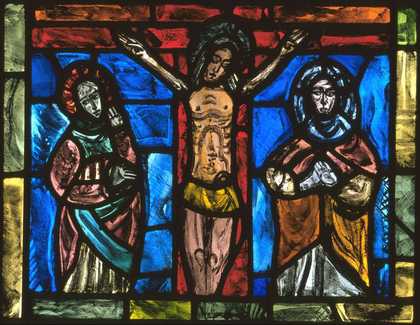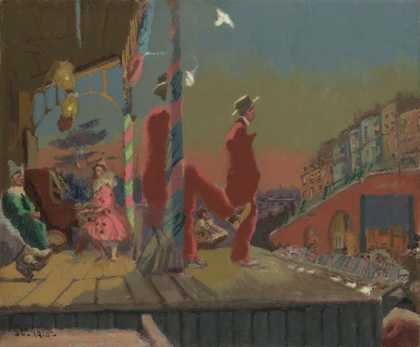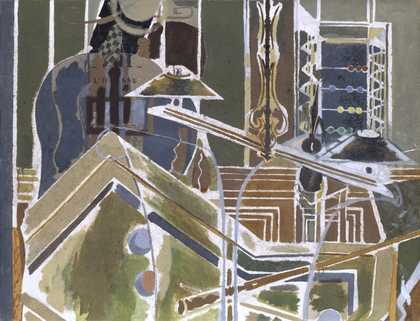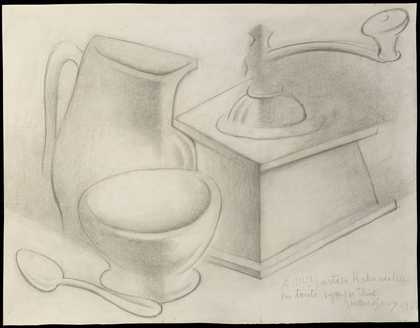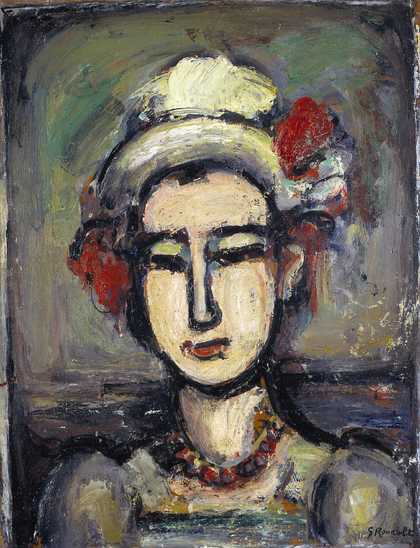Evie Hone was an outstanding religious painter of modern Ireland and a stained glass artist of international stature. All stained glass artists are occupied by the religious subject but they usually come to it through the practice of their craft.
After the First World War she went to London where she studied at the Westminster School of Art and at the Central School of Art, under Walter Sickert and Bernard Meninsky and also under Glen Byam Shaw.
The development of the artist’s work can be seen to fit into three main periods.
The first originates from Cubism in Paris and marks all her paintings until the early 1930s. The splendid Abstract-Maternité is cadenced with rhythms familiar in the work of Braque, Picasso and Gris though richer and more sonorous than the famous cubists’ pictures of the early 1920s.
The early 1930s were marked by the influence of the work of Rouault. Indeed it is possible to consider that Rouault’s drawings and paintings, so deeply expressionistic and fervent, were responsible for awakening in her the realisation that in stained glass lay the possibility of combining formal statements of religious art with the under lying abstract design she desired to incorporate in her work.
Shortly after the Clongowes Window of 1941 this influence faded and the third and last phase commenced with the great series of five windows.
It would be an exaggeration to state that the windows of the last ten years were the greatest she produced. The My Four Green Fields must always rank amongst the most important, but it is notable that a feeling of new assurance entered into the features and disposition of the figures. It was almost as if the curvaceous and rounded line of the Byzantine world were added to the Northern Gothic style which the artist seemed to possess in common with the medieval craftsmen of Chartres and Poitiers.
Even though this exhibition illustrates her work in stained glass more fully, Evie Hone was also a painter in oils and gouaches and had achieved a high place amongst her contemporaries by 1930. Her dedication to her art in all its forms was the centre of her practical life and one can see by turning from sketch to picture, from cartoon to window, how assiduously she applied herself to the pursuit of that unity and perfection which is the end of all major artists.

